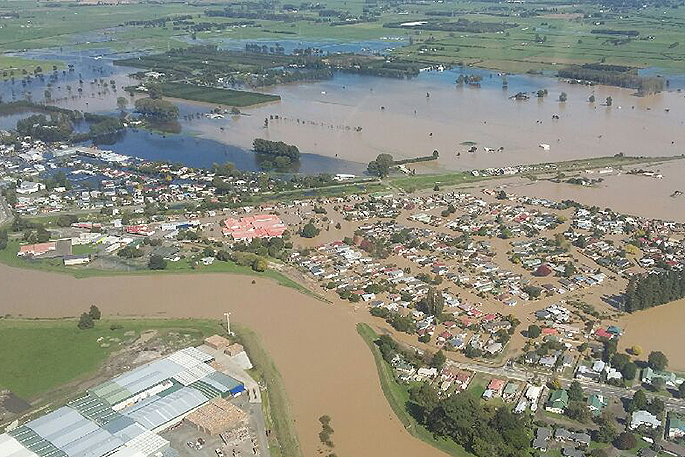Bay of Plenty Regional Council shows steady progress addressing the recommendations of the Rangitaiki River Scheme Review.
On April 6, 2017, a breach of the Rangitaiki River stopbank at College Road in Edgecumbe resulted in widespread flooding of properties and the evacuation of the entire township.
Following that event, the Bay of Plenty Regional Council requested an independent review of the infrastructure and the circumstances that led to the breach of the flood wall and associated flooding. That report was presented to the council and made public in October 2017.
A report earlier this month to the council's audit and risk committee illustrated a coordinated response to the recommendations of the review (often called the Cullen Report).
Council's general manager integrated catchments Chris Ingle says it is important the council takes a coordinated approach to the recommendations and is transparent in reporting progress.
'There are 29 recommendations in the review report and they cross a wide range of council functions including different groups like Civil Defence, flood management, monitoring and data gathering, modelling, engineering, and community engagement. So we have set up an internal working group so we can coordinate that approach and keep track of the different pieces of work.
'Some of the projects are short term and some are much longer. It was helpful to lay the recommendations out for the council and illustrate progress to each.”
Progress has already been made in a number of areas.
Work is well underway with Whakatane District Council and Civil Defence agencies on the development of river level triggers and evacuation planning for the Edgecumbe township. These take into consideration the state of repair works along the river and extensive scenario modelling.
The Cullen Report also made recommendations to bring forward changes earmarked in the long term plan for improvements to the monitoring network in the catchment. Several proposed sites already identified are in the process of being installed and the council is continuing to review the monitoring network in all Bay of Plenty catchments to ensure there is increased spatial coverage and redundancy through surrogate sites and modelling.
Management of Lake Matahina was the topic of one of the recommendations in the report and the council is continuing to work closely with Trustpower to review the Lake Matahina flood management plan to improve communications in flood events and agree protocols for timing and lake level management during an event.
A number of the technical and supporting recommendations have also been taken on board in the reconstruction work and planned upgrades of the College Road Stopbank and Rangitaiki Floodway infrastructure.
'In addition to the technical recommendations, the review had several recommendations around long term strategies and design philosophies. This covered a bit of ground including a growing need to ‘make way for our rivers' and future ‘soft engineering' solutions and how we deal with the changes already happening and the impact of climate change. We have underway, since 2013, a couple of key projects that look at these strategies within and outside our river schemes in the Bay,” says Chris.
'It is also worth noting that the Review found that parts of the community did not understand the flood risk that they live with. We recognise that this community education will be a growing part of what we do in the future.”
The full report including a table cross-referencing the Cullen Review recommendations is available on the website here.



1 comment
Acting on flood water review
Posted on 18-03-2018 20:04 | By MISS ADVENTURE
Liek folks I am sure that thy realise that teh flood waters: - came and have long since gone. 12 months later what exactly have they learnt and changed from it, nothing useful to the preservation of homes and so on.
Leave a Comment
You must be logged in to make a comment.